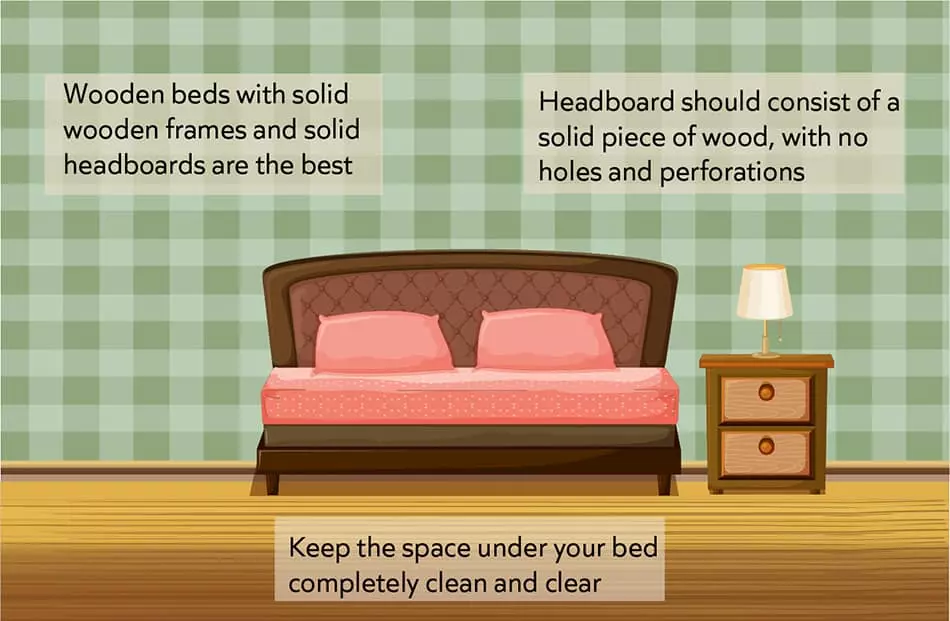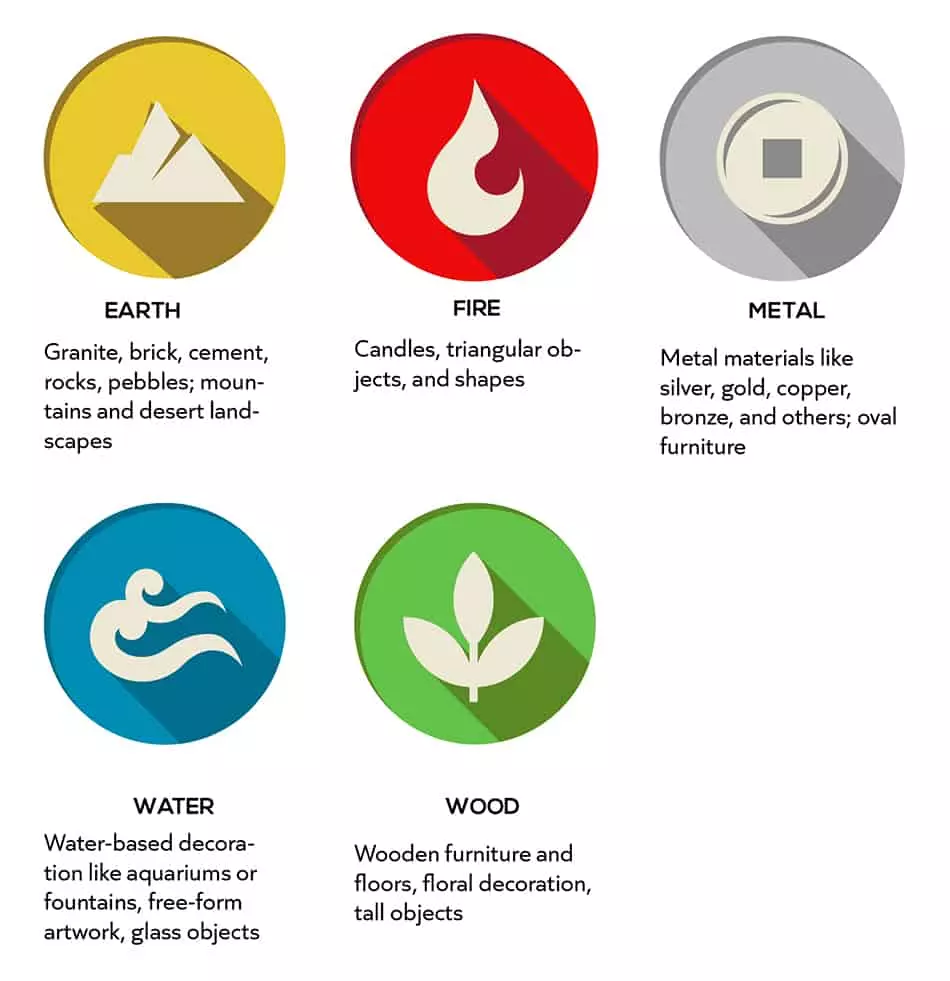Feng Shui is an ancient Chinese practice that focuses on achieving optimal energy balance and proper flow of Qi in your living space. By implementing Feng Shui principles in your bedroom, you can create a serene environment that promotes restful sleep and enhances your overall well-being. In this visual guide, we will explore the key elements of Feng Shui bedroom design.
The Importance of Feng Shui in Bedrooms
According to Feng Shui experts, the bedroom is the most important room in your home. It is where you recharge and gather strength to face the challenges of each day. Since you spend a significant amount of time in your bedroom and are in a passive state while sleeping, you are more susceptible to the influence of different energies. Therefore, it is crucial to pay attention to the Feng Shui of your bedroom.
Feng Shui Bedroom Layout
The position of your bed plays a pivotal role in Feng Shui bedroom design. Ideally, your bed should be placed with the headboard against a solid wall. If a headboard is not available, position the bed head against a wall without windows or plumbing running through it. If using a wall with windows is unavoidable, ensure you can cover it with a non-transparent curtain while you sleep to simulate a solid wall.
The bed should be positioned centrally in the room, allowing sufficient space on both sides for nightstands. It is recommended to place nightstands in pairs, even if you're single, to attract and accommodate a suitable partner. Additionally, there should be ample free space at the foot of your bed.
Avoid placing your bed under sloped ceilings, low beams, skylight windows, or ceiling fans, as they can disrupt the airflow and create disturbances in the room's energy.
Consider the position of doors in relation to your bed. While lying down, you should be able to see the bedroom door, but not be directly in line with it. Avoid having doors that open up in line with your bed, as it creates intense energy flow that hinders relaxation.
It is also essential to consider your home's energy grid when selecting a spot for your bed. Sleeping at the intersection of two magnetic field lines can lead to various issues, including health problems. You can create the layout of your home's grid yourself or hire a professional to find the perfect spot for your bed.
 Image: Feng Shui Bedroom Layout
Image: Feng Shui Bedroom Layout
The Feng Shui Bed
In Feng Shui, wooden beds with solid frames and headboards are considered the best choice. Wood is a non-conductive material that prevents electromagnetic outputs from electronic devices from interfering with your sleep. On the other hand, metal frames can act as conductors and amplifiers of electromagnetic radiation.
The headboard of your bed is also significant as it provides stability and calmness while you sleep. Ideally, it should consist of a solid piece of wood or an upholstered headboard without holes or perforations.
Pay attention to what you store under your bed. Avoid keeping items related to outside movement, such as shoes, as they can disrupt your sleep. Soft items, particularly those related to sleep, are acceptable, but the best option is to keep the space under your bed completely clean and clear. This not only balances the energy but also prevents dust and mite accumulation, improving the air quality in your room.
 Image: Feng Shui The Bed
Image: Feng Shui The Bed
Feng Shui Bedroom Colors
Colors have a profound effect on our mental and emotional well-being. In Feng Shui, the choice of colors depends on what you lack in your life from a psychological perspective. By incorporating complementary colors into your bedroom, you can restore balance in your life.
When it comes to choosing colors for your bedroom, consider the energy map of your home known as the Bagua. Each area of your home has different energetic needs, and fulfilling them promotes harmony. If you lack the time or resources for detailed planning, neutral and earthy tones such as beige, ivory, cream, peach, or light browns are safe choices for any bedroom. Wooden tones also have a soothing effect.
Colors that bring tranquility, such as pale green, light sky blue, or light dull pink, can also be suitable options if you prefer something other than neutrals. For specific energetic requirements, you can add vivid colors through details and decor.
 Image: Feng Shui Bedroom Colors
Image: Feng Shui Bedroom Colors
Feng Shui Bedroom Decoration
When decorating your bedroom with Feng Shui principles, prioritize items that you genuinely care about and avoid pretentious decor. Opt for serene colors and patterns that create a calming atmosphere.
If you choose to display photographs in your bedroom, focus on pictures featuring couples or pairs of people dear to you. This brings a sense of harmony and relaxation to the space.
Feng Shui emphasizes the use of the five elements - Earth, Fire, Metal, Water, and Wood. Incorporating these elements into your bedroom decor promotes balance and positive energy flow. Each element corresponds to specific materials and objects. For example: granite, brick, and cement represent Earth; candles represent Fire; metal materials like silver and gold represent Metal; water-based decorations and glass objects represent Water; and wooden furniture and floors represent Wood.
 Image: 5 elements in your bedroom
Image: 5 elements in your bedroom
Other Feng Shui Bedroom Rules
No Mirrors
According to Feng Shui principles, mirrors should not be placed in the bedroom. Mirrors reflect light and create a constant flow of energy, which can disrupt your sleep. If you cannot avoid having a mirror, consider covering it with fabric during rest periods.
No Electronics
Limit the presence of electronic devices and screens in your bedroom. Electromagnetic fields generated by these devices can negatively impact your sleep quality and overall health. Since you are in a passive state while sleeping, you are more vulnerable to the effects of electromagnetic radiation.
No Sharp Edges
Sharp edges create a sense of discomfort and disturb the flow of energy in the room. Avoid having pointy furniture or objects in your bedroom. If you cannot remove them, consider using solutions like placing a plant in front of them, using wooden corner covers, or covering them with cloth.
Material Quality
Choose eco-friendly and pesticide-free materials for your bedroom, including organic cotton bed sheets and sustainably harvested wood. This ensures a healthier indoor environment by preventing the release of harmful compounds into the air.
Lights
Opt for soft and dim lighting in your bedroom. This creates a relaxing ambiance conducive to sleep. Candles can also be a good choice, but use them thoughtfully as they deplete oxygen and pose a fire hazard.
Books
Keep only the books you are currently reading in your bedroom. If you have a bookshelf in your bedroom, consider relocating it to another area of your home. If moving the bookshelf is not possible, organize your books by color and thickness. Heavier books should be placed at the bottom of the shelf, and ensure that the books are aligned with the edge of the shelf.
Keep it Tidy, Simple, and Decluttered
Maintaining a decluttered and neat bedroom is essential. Avoid letting items pile up, particularly laundry. Clutter can lead to restlessness and interfere with your ability to relax. Remember to close all doors and drawers when not in use.
In conclusion, implementing Feng Shui principles in your bedroom can transform it into a harmonious and peaceful space. By paying attention to the layout, colors, decor, and other rules, you can enhance the energy flow and create a serene environment that promotes restful sleep. Whether you delve deep into the advanced principles or make simple changes, Feng Shui can help make your bedroom more comfortable, soulful, and conducive to a good night's rest.
Infographic: Feng shui bedroom infographic













